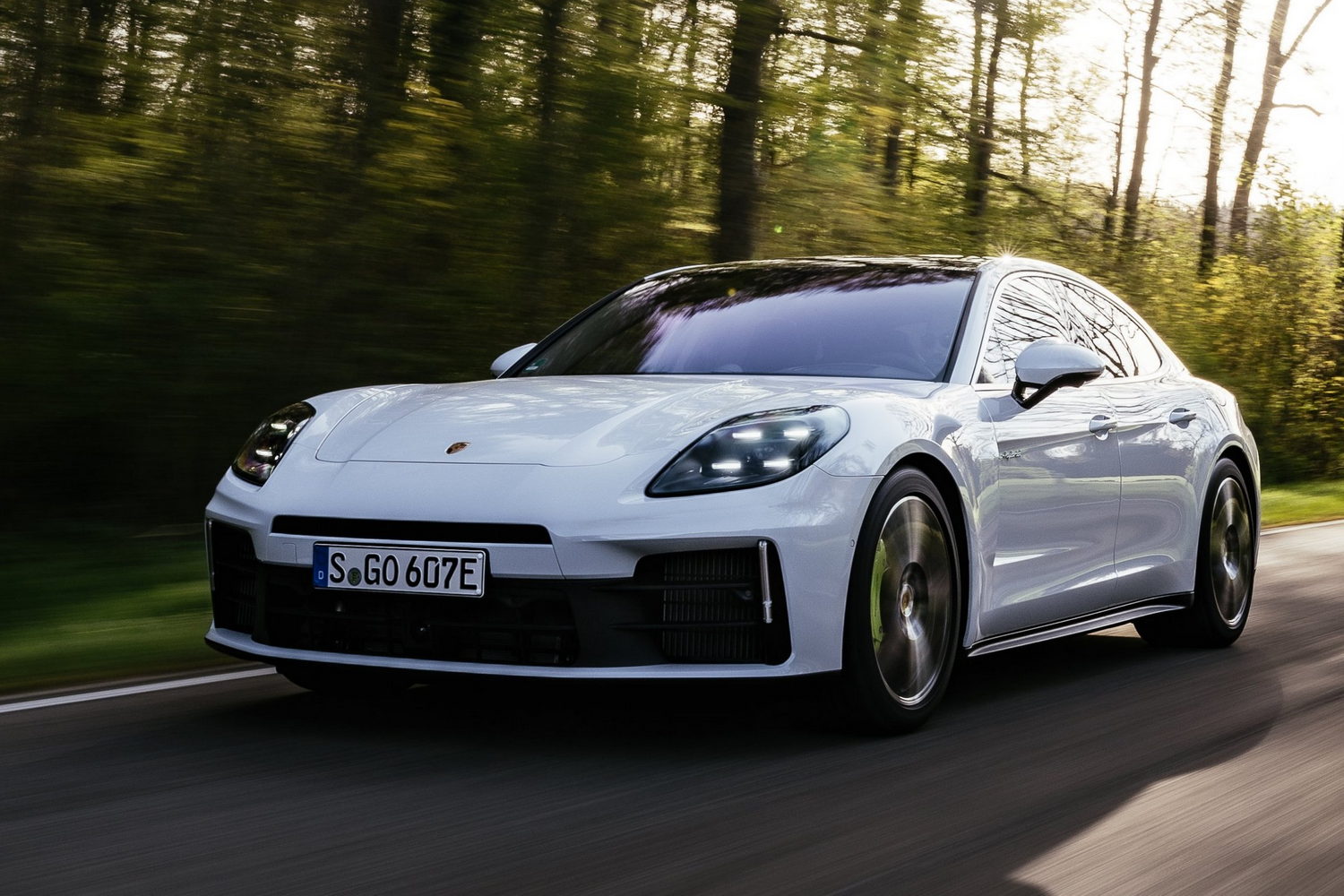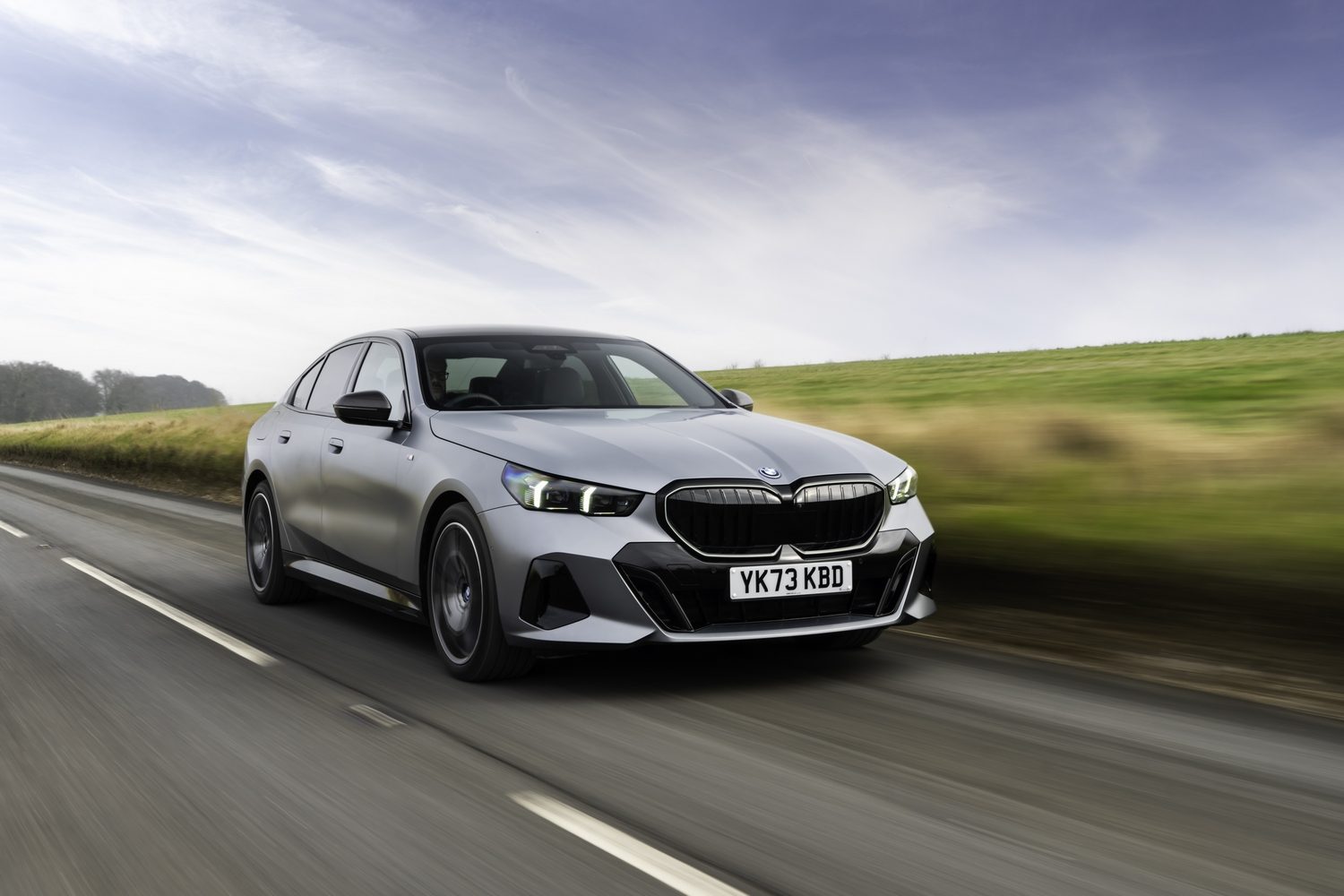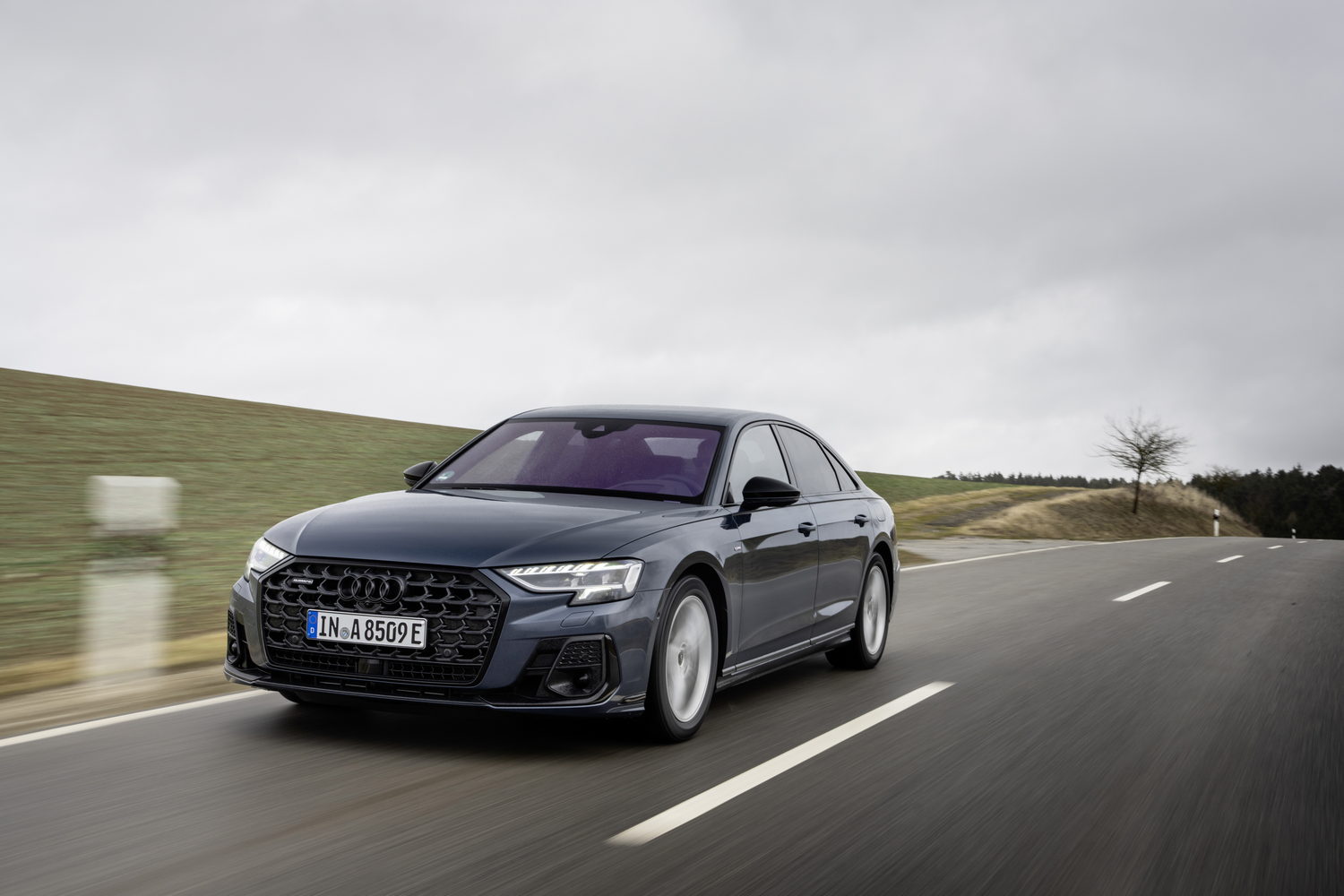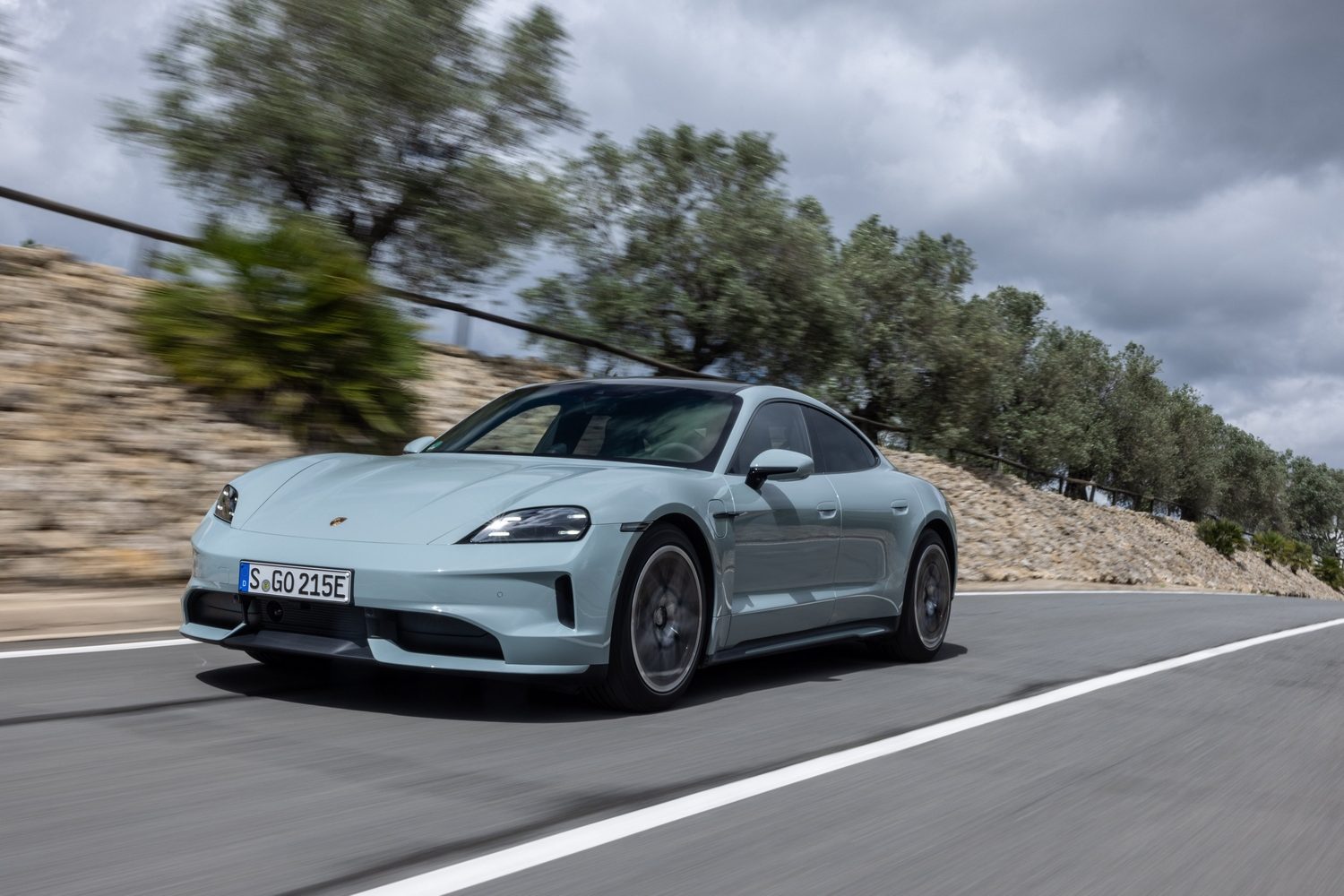Introduction to the 2025 Porsche Panamera 4 E-Hybrid
We can't really bring ourselves to call a new Porsche costing a little over €130,000 “affordable,” but thanks to our VRT rules, this Panamera 4 E-Hybrid is the least expensive Panamera Porsche offers in Ireland. Yet with plenty of power, the promise of decent fuel economy and the usual Porsche sportiness and luxury, it's set to be one of the most popular models in the lineup.
On paper, at least, it's easy to see why. The balance of power and efficiency is compelling, and with a price tag €16,000 lower than that of the next-cheapest Panamera model, the 4 E-Hybrid looks like the obvious choice for the vast majority of Panamera customers.
Still, it falls to us to find out whether what's obvious on paper is also true on the road, and whether the handful of people who buy this car every year will enjoy it. We've already sampled the latest-generation Panamera in various forms, so we've got plenty to benchmark it against, but this test of the 4 E-Hybrid, driven on the vaguely representative (but barely presentable) roads of the UK, is perhaps the most important one yet.
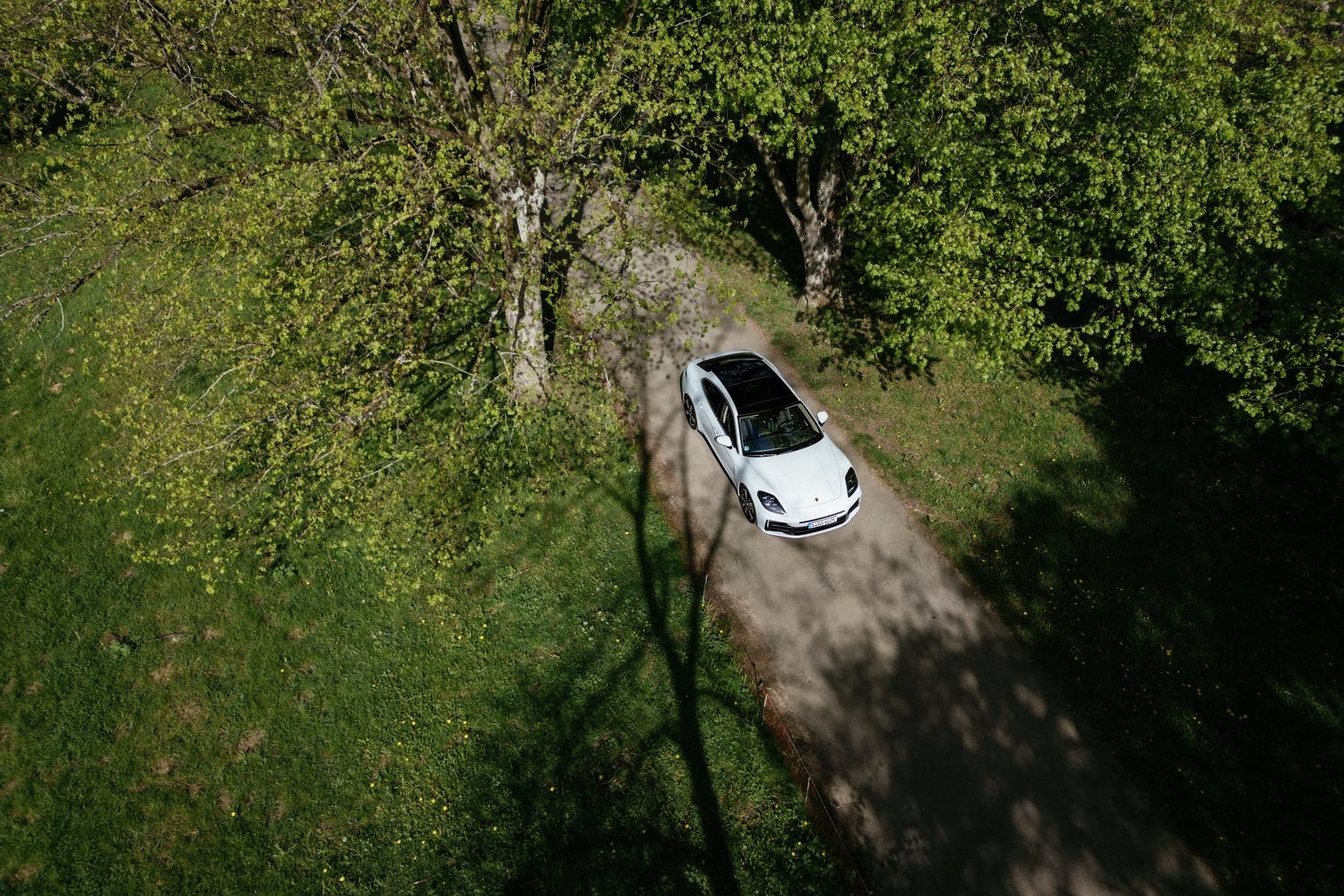
Pros & Cons of the 2025 Porsche Panamera 4 E-Hybrid
Pros: Decent electric range, well made, great to drive
Cons: Lacks aural excitement, unrealistic official economy
Exterior & Design of the 2025 Porsche Panamera 4 E-Hybrid
• Panamera shape looks as good as ever
• Difficult to discern this model from others
• Estate version no longer available
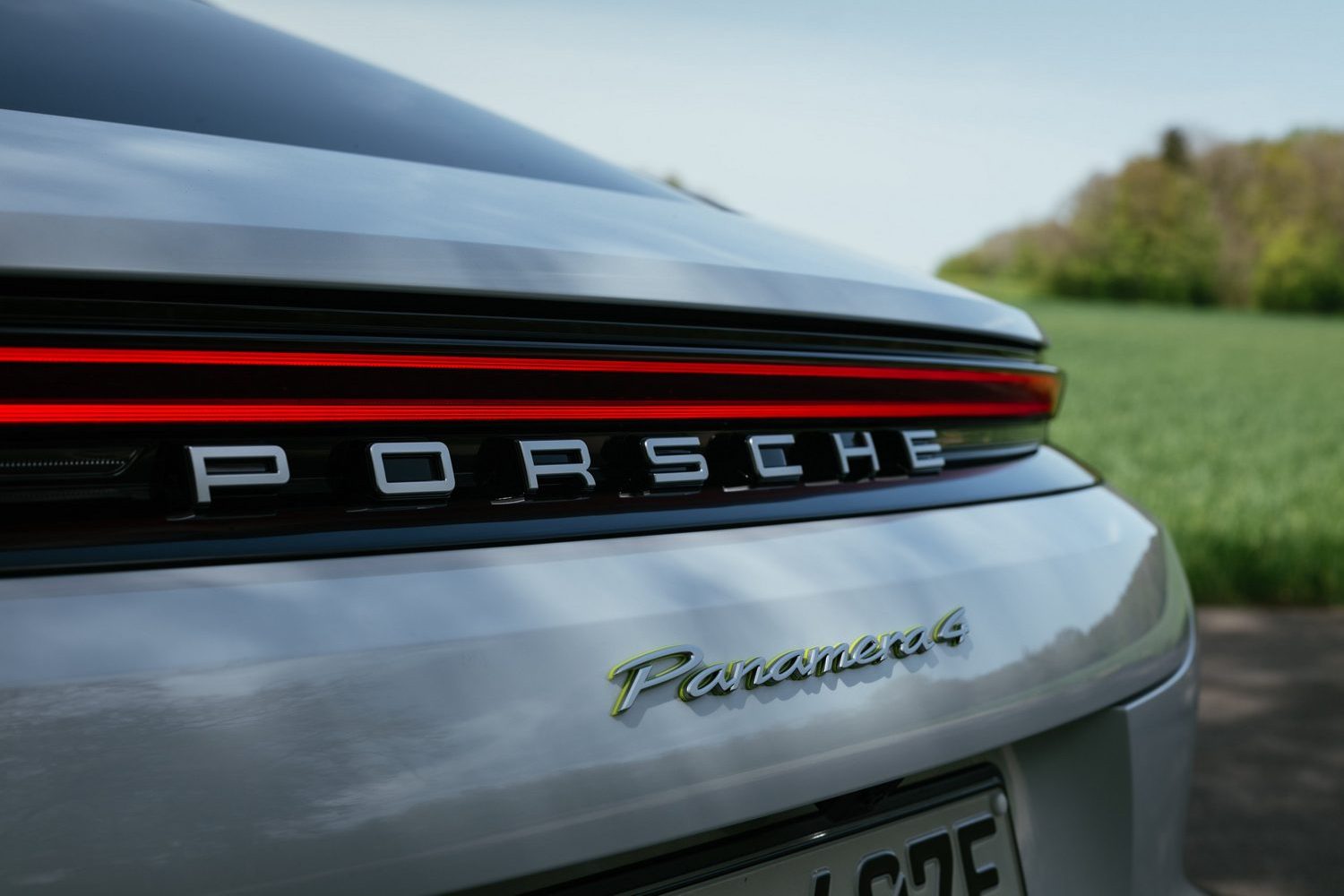
At a glance, it isn't easy to differentiate the 4 E-Hybrid from other Panamera models. Look closely, and you'll spot some of the clues, but the bodywork is more or less identical, with the same swooping fastback shape (sadly the Sport Turismo estate version is no more), and the same dimensions of:
Length: 5,052mm
Width: 2,165mm
Height: 1,419mm
Wheelbase: 2,950mm
It also gets the same basic styling, with a bumper that's bespoke to the latest-generation Panamera models and looks a bit more aggressive than before. There are bolder front wings, too, and a full-width rear light strip. So far, so Porsche Panamera. The 4 E-Hybrid models are marked out by their E-Hybrid logos on the front doors, and the Panamera 4 lettering on the rear.

Porsche claims it has tried to differentiate between its Panamera models more than before, with GTS versions getting their own trim and design cues, while the Turbo versions all get the new 'Turbonite' metallic grey trim around the badges and bumpers. So, one of the easiest ways of telling a Panamera 4 E-Hybrid from a Turbo S E-Hybrid is simply by first determining the lesser model isn't a Turbo or a GTS...
Whatever, we aren't too bothered about the lack of differentiation, because the Panamera is a good-looking car in any form. It was once seen as a bit of a dog's dinner, but it has matured brilliantly and now goes down as one of the sportiest and sexiest saloons out there. Except, of course, it's technically a fastback because the tailgate glass rises with the boot lid, as it does in a hatchback. Sorry, we'll go and nerd out about terminology elsewhere...
Interior, Practicality, Tech & Comfort of the 2025 Porsche Panamera 4 E-Hybrid
• Solidly made and upmarket Porsche interior
• Cabin design isn't all that exciting
• Plenty of space in the back, if you're not tall
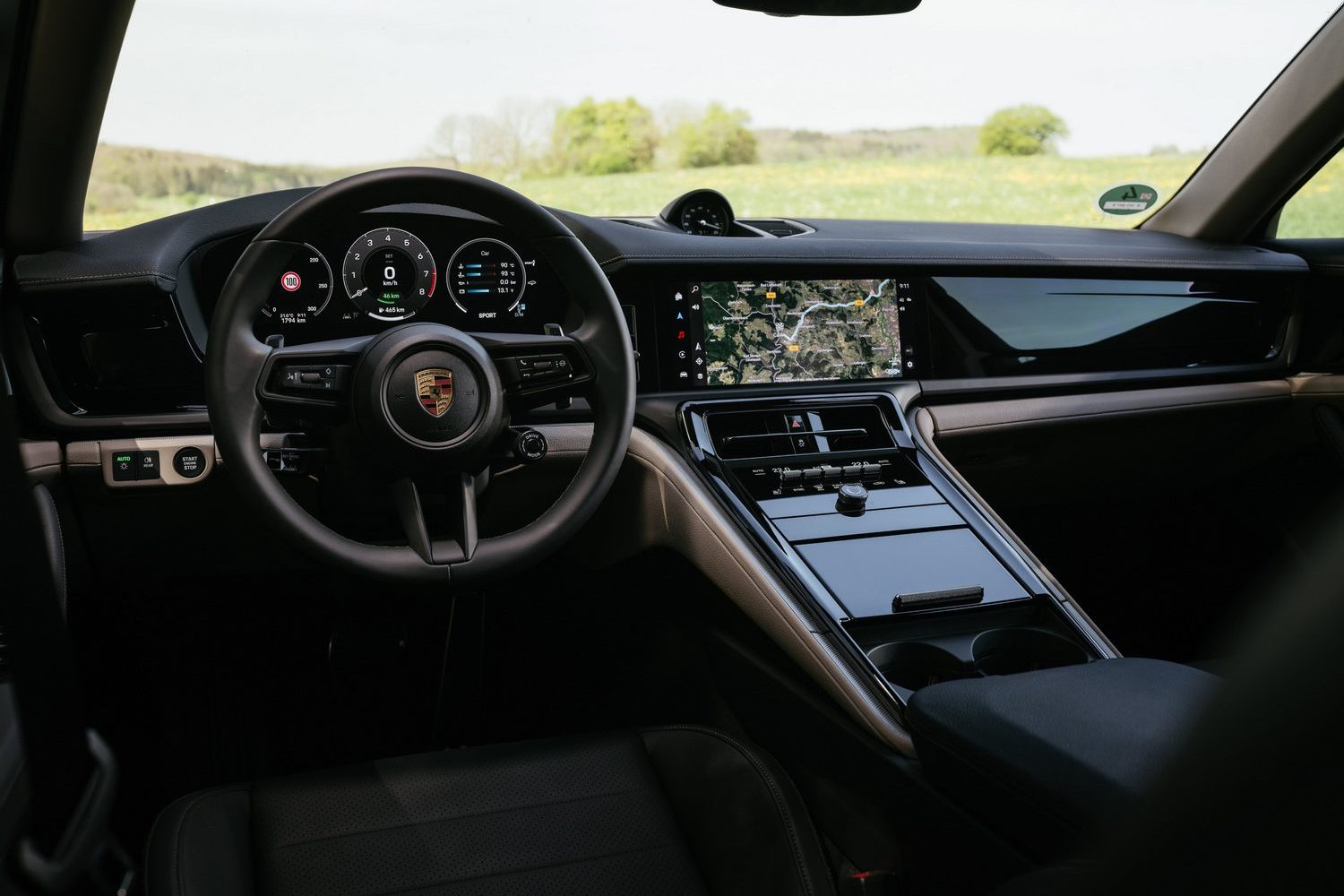
As ever, when getting into a Porsche, the overwhelming impression of the cabin is one of Germanic solidity, class and competence. Perhaps the design isn't especially inspiring, but every material in the Panamera's cabin feels classy, and it's all impeccably stitched together, leaving a sense of real quality.
The tech is good, too, and you get the feeling it's all been thought out properly, by people who knew what they were doing. The digital instrument cluster, for example, is pin sharp, and though it's configurable, the layout is still largely traditional, so everything is where you expect it to be. Nobody's going to call it game-changing tech, but it works really well, and Porsche deserves some credit for that.
The same goes for the central touchscreen, which is sharp, responsive and easy to navigate, but doesn't feel especially ground-breaking. Part of the reason it's so easy to use, though, is that the relocation of the drive selector to a toggle switch on the dash has freed up space for a climate control panel on the centre console, providing 'proper' buttons for heating and ventilation controls. Again, it's nothing new, but we wish more manufacturers would do something similar.
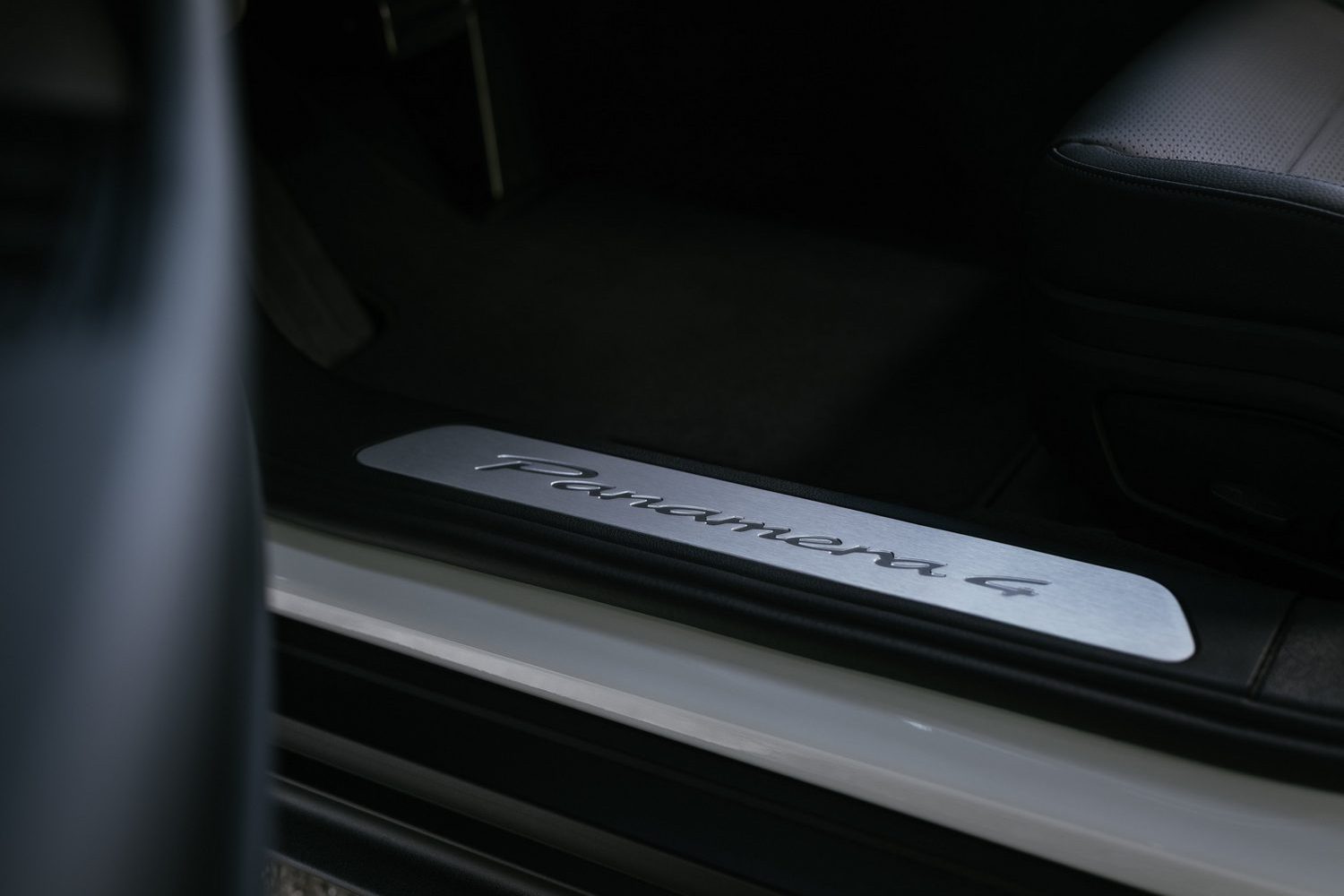
Perhaps more intriguing is the optional passenger display, which is (where specified) built into the dashboard on the passenger side. With a layer of film built into the screen to prevent the driver seeing the display, the passenger can use it to watch videos or to change the radio station without disturbing the driver. In fairness, we suspect most buyers will just use an iPad and save themselves a fortune, but it's interesting tech.
There's a touchscreen in the back, too, assuming you stick with a four-seat Panamera. It's a much better solution than the '4+1' version, which provides a very occasional central rear seat that would be hideously uncomfortable to occupy for any length of time. But the other two seats are great, with just about enough headroom and plenty of legroom, making it a lovely place to while away the miles.
But while space in the back is good - for two passengers, at least - the boot capacity is slightly compromised by the inclusion of the hybrid system. Where a 'standard' Panamera model gets 494 litres of boot space, which is very respectable, the 4 E-Hybrid only gets 430 litres, which feels a bit small. It's only fractionally more than you get from hatchbacks such as the Honda Civic and Peugeot 308.
Performance of the 2025 Porsche Panamera 4 E-Hybrid
• Plug-in hybrid powertrain same as more powerful models
• Plenty of electric-only driving
• Handling is sensational
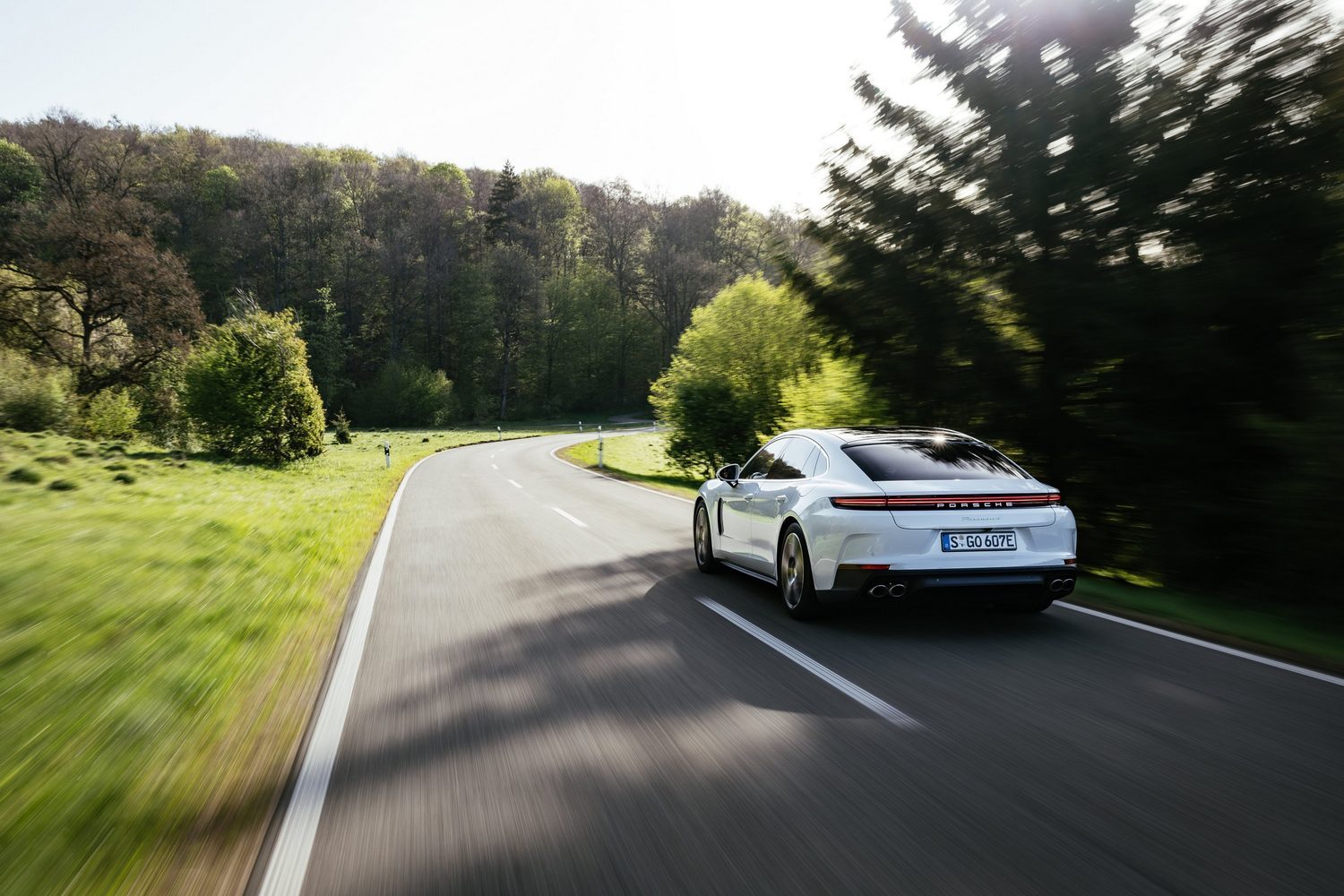
To anyone who has read our reviews of other Panamera E-Hybrid models, the 4 E-Hybrid's powertrain will sound very familiar - at least from an electrical point of view. Even this 'entry-level' Panamera hybrid gets the same battery and 140kW electric motor as every other E-Hybrid model.
What differs, however, is the engine. Here, it's a 2.9-litre V6 petrol unit, which produces 304hp all on its own. But when that is combined with the might of the electric motor, the Panamera 4 E-Hybrid gets an ample 470hp to play with. And because of the clever software on board, it can blend the two propulsion systems seamlessly to provide the immediacy of an electric motor while also offering the relentlessness of a big petrol engine.
Used to its full extent, then, it's an intoxicating proposition. The dash from a standstill to 100km/h takes around four seconds, and flat out, the Porsche will do 280km/h. It's a very, very fast car.
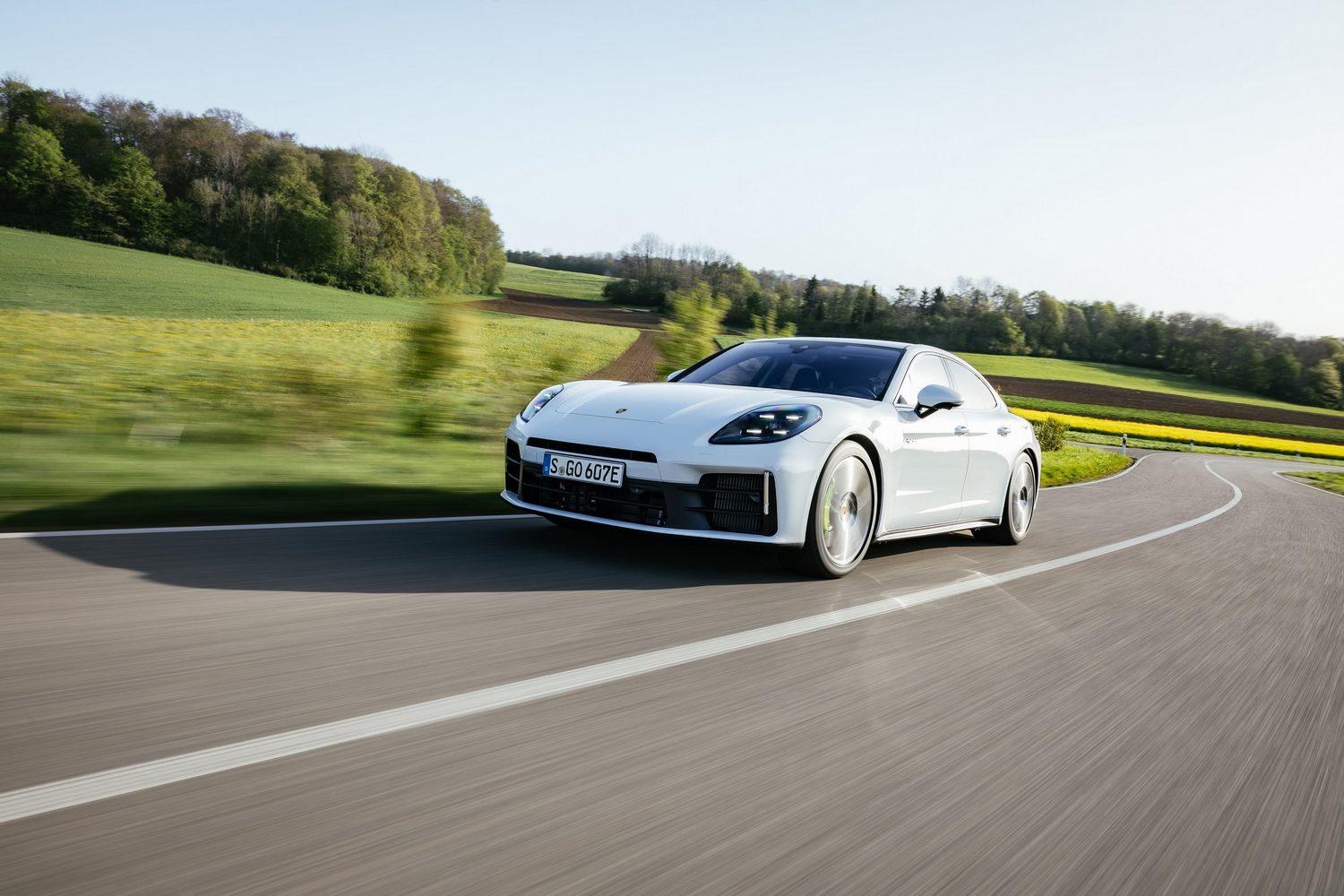
Yet perhaps the most striking thing about the Panamera 4 E-Hybrid is not its straight-line speed, but its refinement. Hybrid systems aren't always as smooth and quiet as the marketing bods might have you believe, but this one is. Were it not for the constantly shifting graphics on the digital instrument display, you'd barely have a clue whether the car was running on petrol or electric power, so seamless is the transition between the two. You don't even hear it, partly because there's no jolt, no real lump in the power delivery and no real noise from the petrol engine at everyday speeds.
Sure, if you're in the more eco-centric driver modes and you really mash your foot into the carpet, there will be a moment's hesitation as the engine, gearbox and electric motor sort themselves out, but if you're in Sport or Sport Plus mode at that moment, you'll just ride a wave of power. And while this smoothness is lovely on the motorway, there isn't much aural excitement from the V6 unless you really pin it, or you're in Sport Plus mode. Perhaps the optional sports exhaust system (set apart by its four round tailpipes, rather than the usual two square ones) is a wise option to specify, allowing you to keep the car hushed when you want it to be a relaxing motorway cruiser, and a little more interesting when you want more bite.
The most impressive option fitted to our test car, however, was the Active Ride Control air suspension. Although air suspension is standard across the range, the Active Ride Control system takes that technology to the next level. Not only can the car adjust the suspension to provide different levels of ride comfort and body control, but it can also adjust the car's angle, raising the nose under braking to counteract the sensation of 'dive' when you stop, and leaning into corners to reduce the sensation of roll as the car darts into the bend. Admittedly, some of the features - the way the car rises sharply to access height when you open the door, for example - are a bit disconcerting, but it's all very clever.
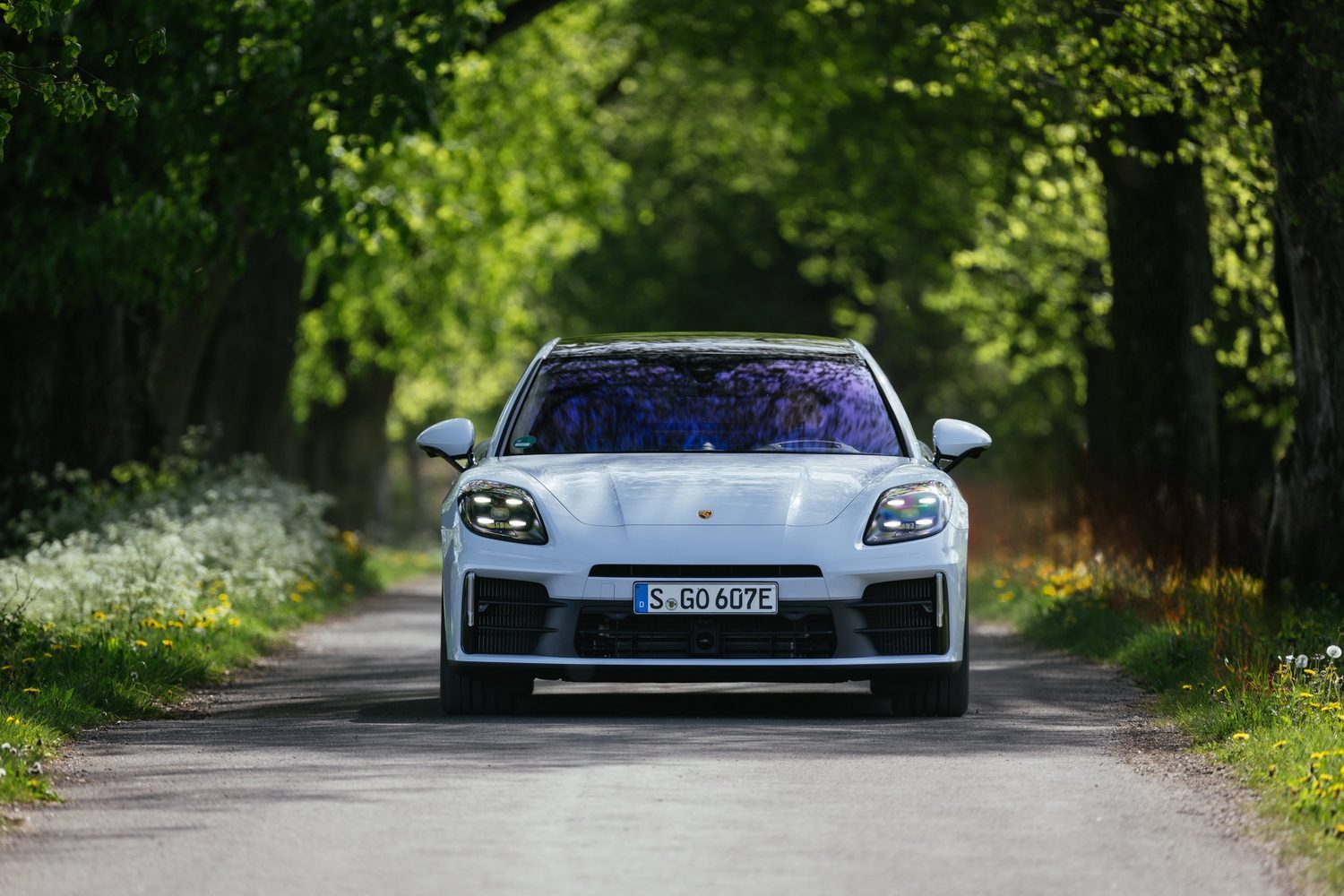
Better still, it's all very comfortable. Even in Sport Plus mode, the ride is perfectly acceptable. You can still feel everything that's going on under the car, but in an informative, rather than uncomfortable way. It's as though the suspension is operating like a bodyguard in a crowd, allowing you to see and hear what's going on around you, and even feel the hustle and bustle, but it'll never let anything impact or hurt you. The result is this sense of calm at all speeds and over all surfaces, with no jolts or shocks through the suspension and no body movement to speak of. It makes for a sensational long-distance cruiser.
But it makes for a sensational sports saloon (fastback, whatever), too. That unerring body control is matched by Porsche's traditionally precise steering, and the brakes are brilliant, rapidly bringing the 2.2-tonne car to a stop. And with the optional rear-axle steering, which turns the rear wheels in the opposite direction to those at the front in low-speed corners, the turning circle is remarkably good for something so big. You can occasionally feel that system at work, but it's generally a very natural integration that's well worth specifying if you live somewhere with narrow roads or tight spaces. Or, to put it another way, outside the United States of America.
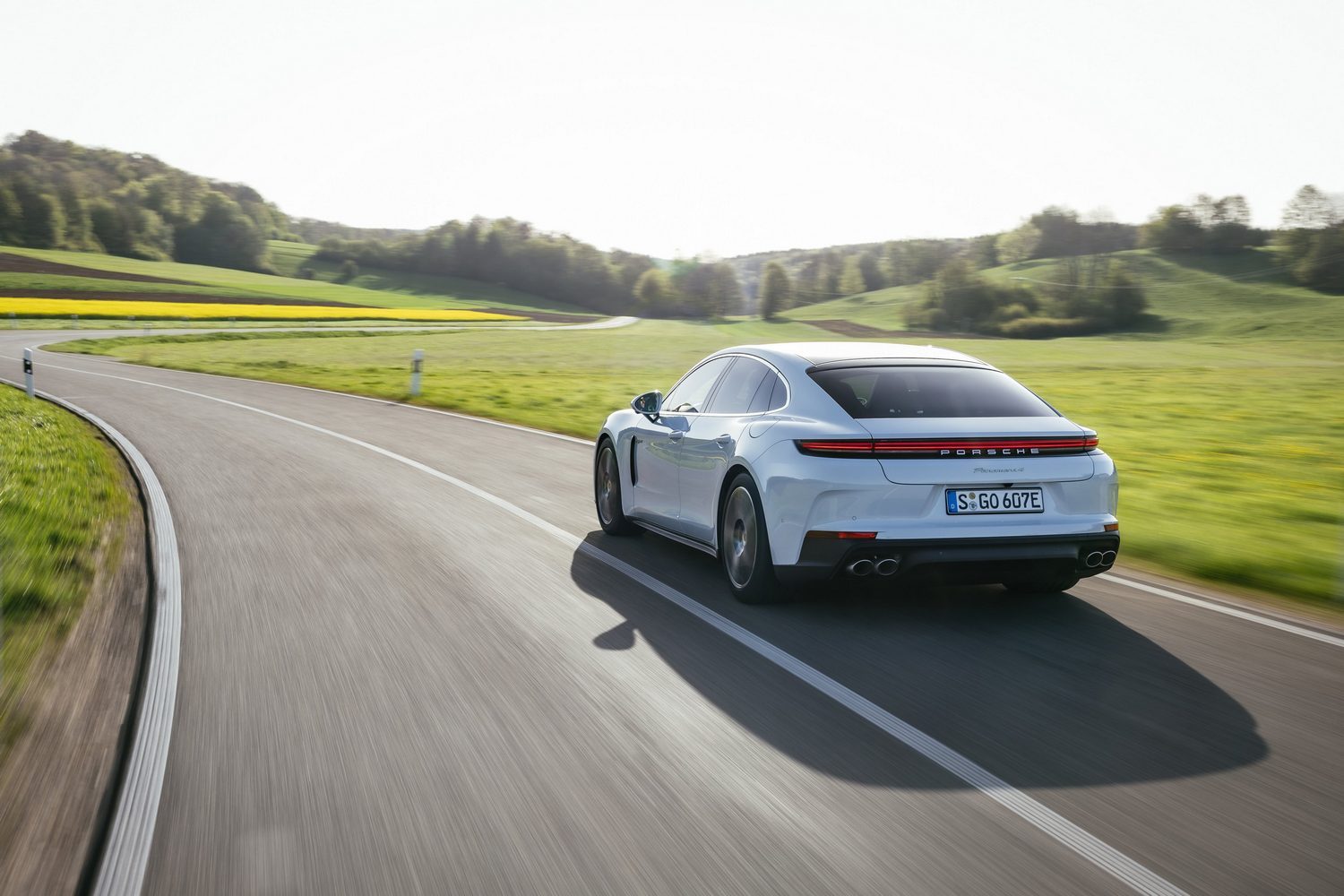
Range, Battery & Charging of the 2025 Porsche Panamera 4 E-Hybrid
• Big battery provides decent real-world electric range
• Maximum charge speed of 11kW
• Official EV range of 81km
Like every other plug-in-hybrid version of the Panamera, the 4 E-Hybrid comes with a 25.9kWh battery pack (21.8kWh is usable), which is bigger than that in the first-generation Nissan Leaf. With that much capacity, the electric-only range stands at almost 100km, which isn't bad for a heavy car with a big V6 engine up front. Okay, so you're looking at something like 70-80km in the real world, but that's more than enough for a short commute or trips to the shops. And if you can charge regularly at home, there's no need to use petrol power at all around town.
That's a good thing, because the 2.9-litre V6 isn't especially frugal at low speeds. It gets a bit better on a motorway slog, where it can sit quite happily at just 1,500rpm, burbling away without a care in the world. Even so, you aren't going to achieve the 1.1 litres/100km official consumption unless you rarely stray far from a plug, but you can still manage something respectable for a 470hp executive car.
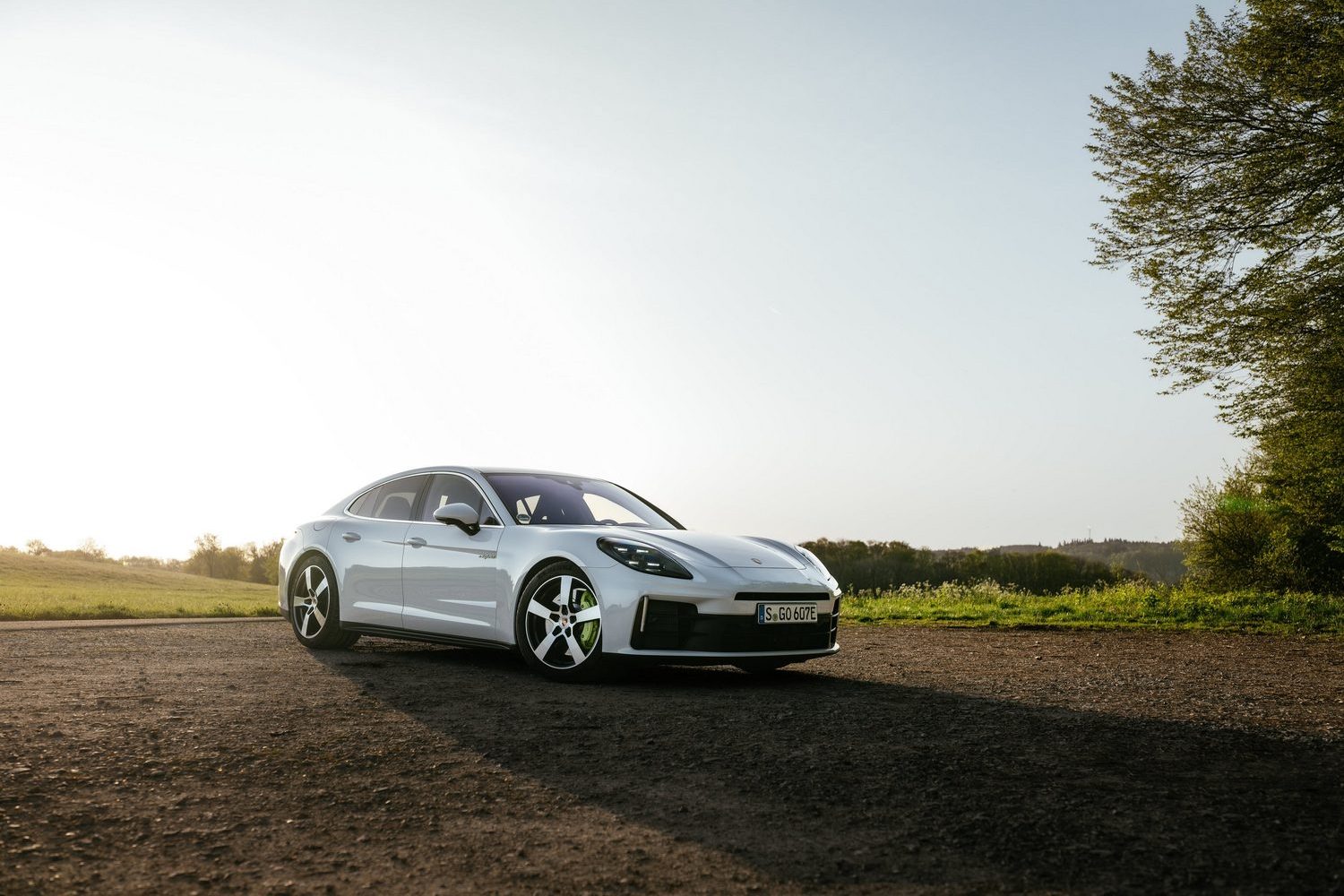
And the E-Hybrid versions of the Panamera are more than just fast in a straight line. With the ability to charge at up to 11kW on an AC charging point, the battery can be recharged in less than three hours. It will take a little longer on a conventional domestic 'wallbox' charging point, which will normally offer around 7kW, but if you plug in before you go to bed, you'll have a fully charged battery by the time you get up.
Running Costs of the 2025 Porsche Panamera 4 E-Hybrid
• Plug-in hybrid system keeps taxation low
• Low running costs if you don't travel far
• But parts, labour and servicing won't be cheap
Let's not beat about the bush: the real appeal of the Panamera E-Hybrid is its cost - both in terms of its purchase price and its running costs. While the power and performance are all well and good, the promise of massive economy and a significantly cheaper starting price will be what draws consumers in. And while the official economy figure might be out of reach for the vast majority of owners, the 4 E-Hybrid will still be more efficient than any of its stablemates.
However, the running costs will still befit a Porsche when it comes to servicing and maintenance. Parts and labour won't come cheap, whether you use a specialist or a main dealer, and even consumables such as brakes and tyres will be pretty expensive. The same is true of annual services.
Irish Pricing & Rivals of the 2025 Porsche Panamera 4 E-Hybrid
• Cheapest Panamera available in Ireland
• Everything is relative, and it still costs €130,552
• Competes with plug-in hybrids from Audi and BMW
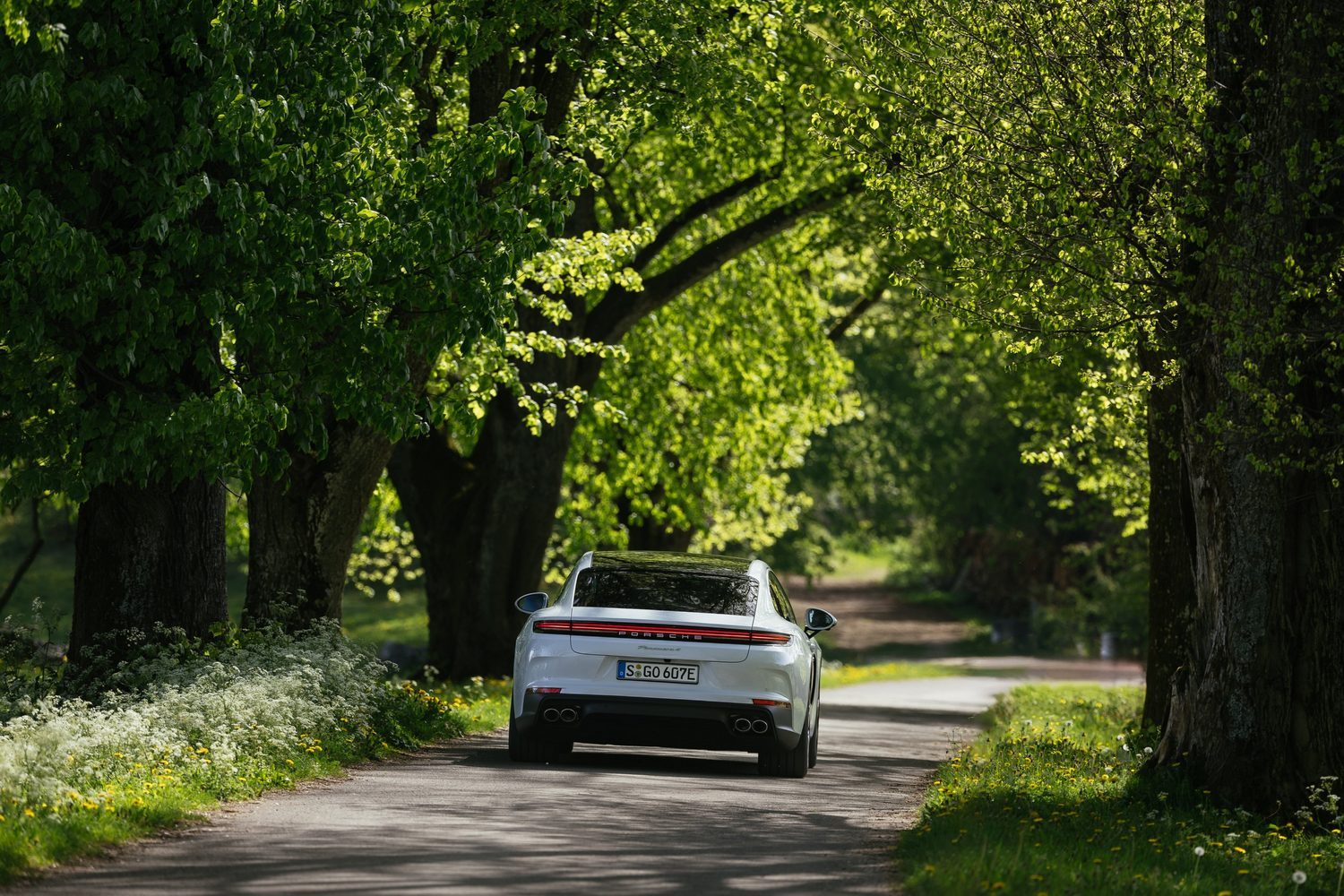
Thanks to VRT rates in Ireland, the E-Hybrid Panamera models are the only ones that really make any kind of financial sense. So much so that a 'basic' Panamera - the petrol-powered V6, rear-wheel-drive model - costs €45,000 more than the more powerful, plug-in hybrid, all-wheel-drive Panamera 4 E-Hybrid tested here. In fact, it's only €30,000 cheaper than the 680hp Turbo E-Hybrid.
Admittedly, the numbers will be big no matter which Panamera you choose. Even this 4 E-Hybrid model costs €130,552, and that's a lot of money. But when the GTS, which only gets another 30hp from its 4.0-litre V8 engine, is a whole €125,000 more expensive, it's easy to see why the E-Hybrid models are so popular.
Nevertheless, the numbers involved are still large, and some may say a BMW 550e xDrive offers better value, with its roomy cabin, pleasant drive and €94,405 asking price. In fact, you can have a V8-engined, plug-in hybrid BMW M5 for the same price as the Panamera 4 E-Hybrid, which rather blows the question of value out of the water.
Not that anyone is really buying a Porsche to save money. It's just that the 4 E-Hybrid is the least expensive way into Panamera ownership, and it comes with much the same standard equipment as any other model in the range. Which is to say, there isn't quite as much as you were hoping for, although Porsche is getting better on that front.
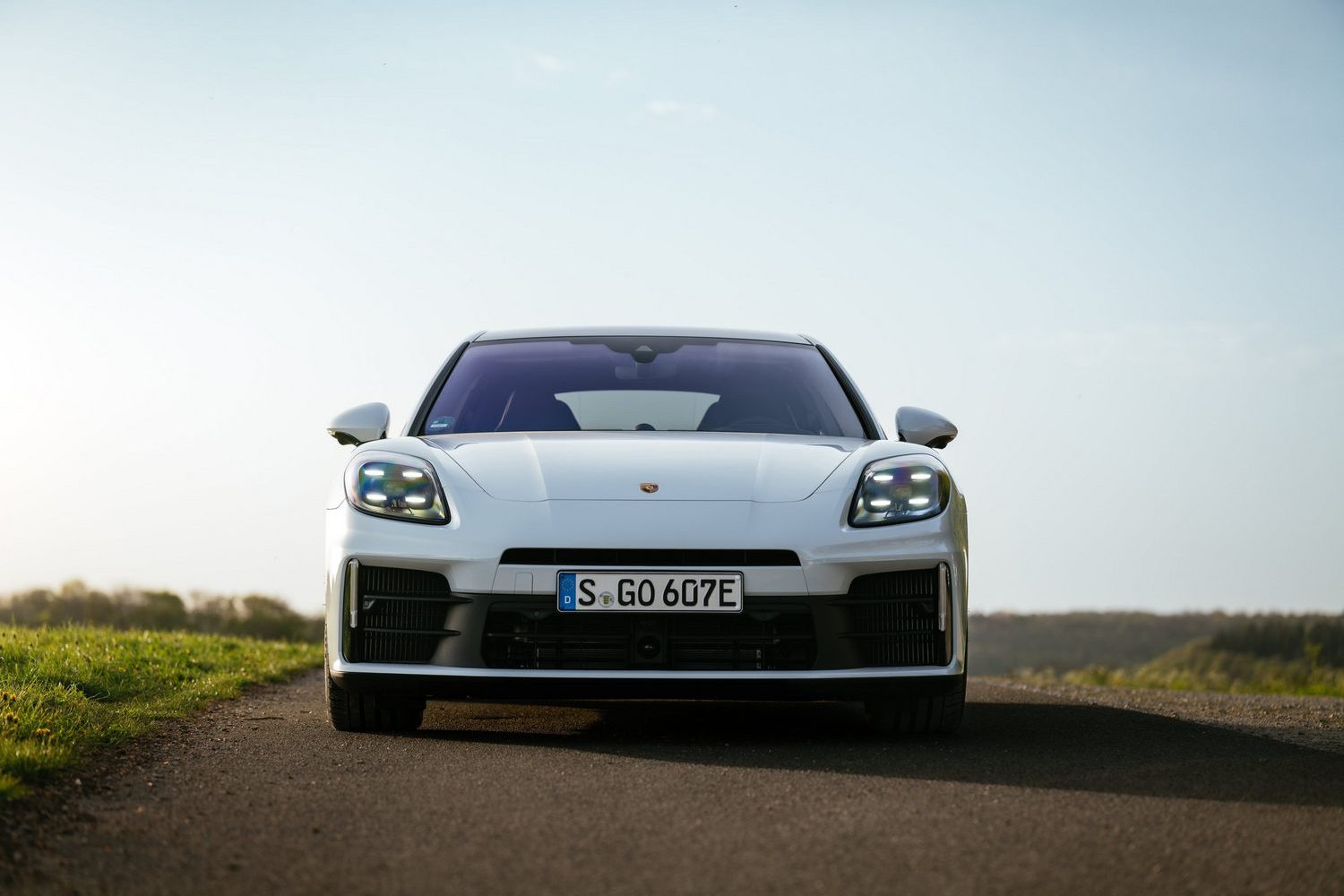
So, while heated leather seats, alloy wheels and climate control are all standard, as is navigation and the digital instrument display, an occasional seat between the two rear seats is an €868 option. And the head-up display costs more than €1,400. At least you get a Bose sound system thrown in.
Verdict - Should You Buy the 2025 Porsche Panamera 4 E-Hybrid?
In a word, yes. It might be a head-over-heart choice for those set on a Panamera, but it's incredibly capable and brilliant in its way. If you want a sporty, spacious executive car that's fun to drive, luxurious and well made, then look no further. The Panamera is one of the best in the business, and though the 4 E-Hybrid may not be the sexiest example, it's definitely the version you choose with your head.
FAQs About the 2025 Porsche Panamera 4 E-Hybrid
Can I have a Sport Turismo estate version instead?
Sadly not. The old Sport Turismo was easy on the eye and easier to live with than the fastback, but it has been discontinued with the arrival of the new model. It's a shame, but the only Porsche estate available these days is the Taycan Sport Turismo.
How many child seats fit in a Porsche Panamera 4 E-Hybrid?
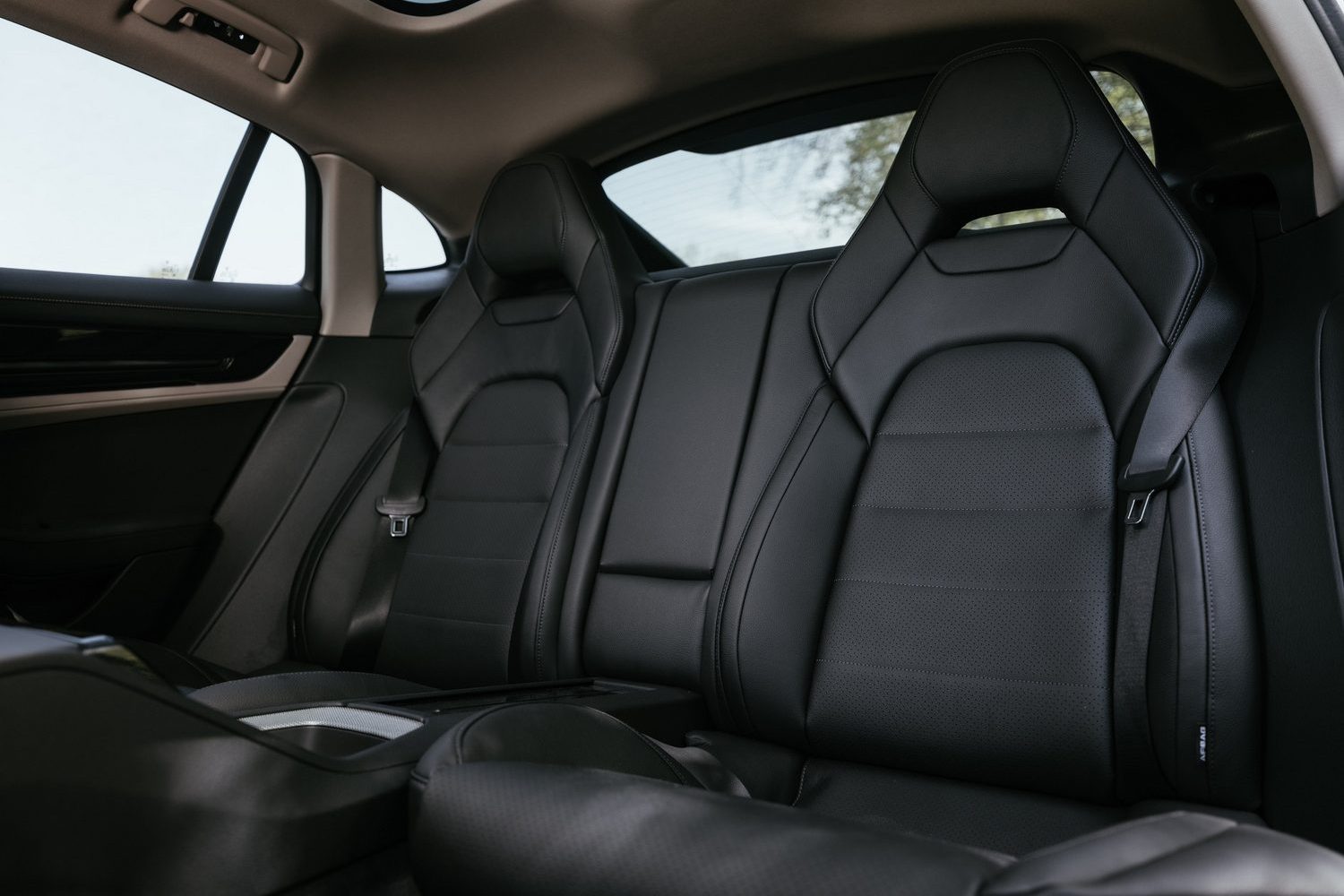
Two. Porsche has installed ISOFIX child-seat mounting points in the rear seats, while customers can specify a front passenger seat ISOFIX point as a €185 option. Though the Panamera has a low, swooping roof, space in the back is more than ample, and access is reasonable for a car in this class. Perhaps it isn't the most practical car out there, but it can work as a family hack.
How safe is the Porsche Panamera 4 E-Hybrid?
Because Euro NCAP buys the cars it tests, the Panamera has never been put through its paces, so we don't know exactly how safe it will be. However, we do know all the current Porsche models that have been tested received a full five-star rating, which bodes well for the Panamera's credentials. Given standard equipment includes autonomous emergency braking and speed limit warning technology, we expect the Porsche would do well if it were tested, but it's worth noting that some safety-related technology is only offered as an optional extra.
Want to know more about the Porsche Panamera 4 E-Hybrid?
If you want to know anything else about the Porsche Panamera 4 E-Hybrid, any of its rivals, or any other car on the market, then why not head over to our Ask Us Anything page? There, you can pose your question, and our team of experts will get to work on an answer for you.

